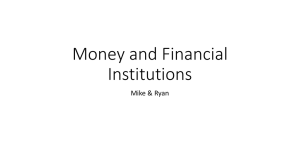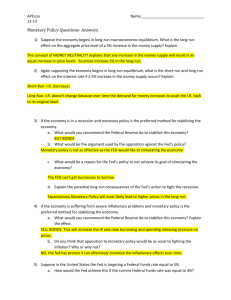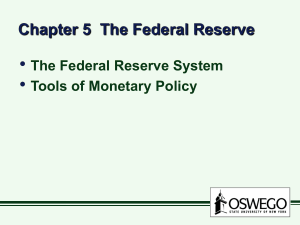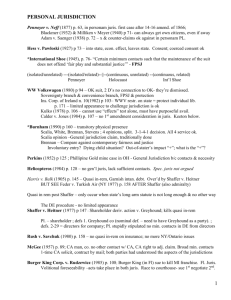Personal jx: Individuals/Corporations
advertisement
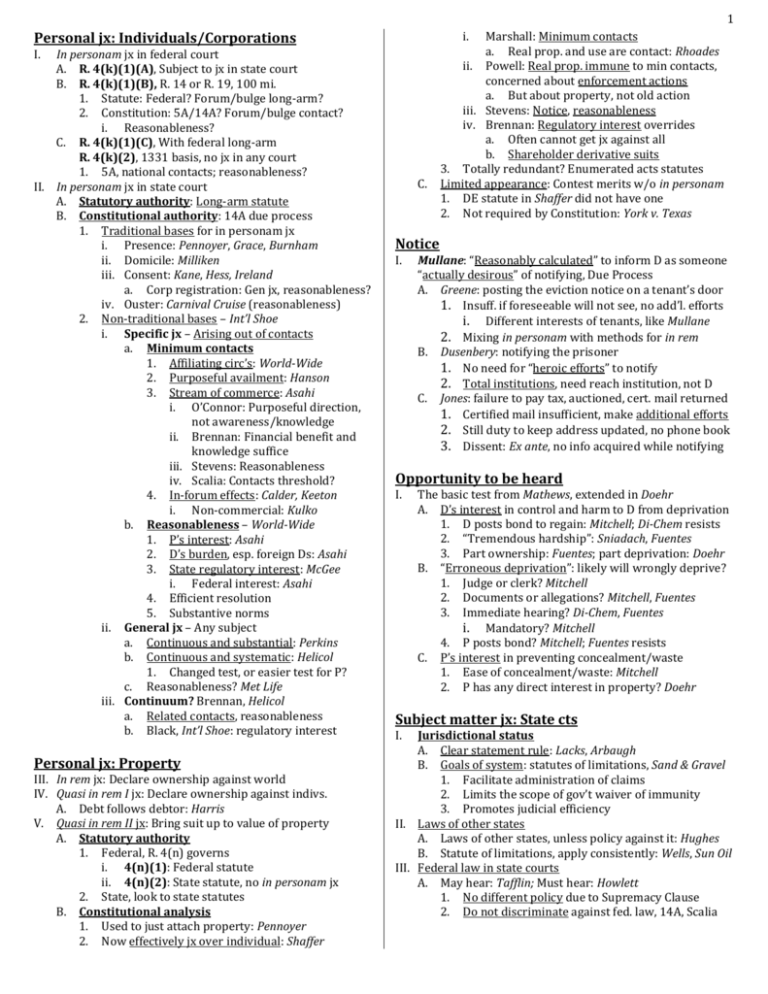
1 Personal jx: Individuals/Corporations In personam jx in federal court A. R. 4(k)(1)(A), Subject to jx in state court B. R. 4(k)(1)(B), R. 14 or R. 19, 100 mi. 1. Statute: Federal? Forum/bulge long-arm? 2. Constitution: 5A/14A? Forum/bulge contact? i. Reasonableness? C. R. 4(k)(1)(C), With federal long-arm R. 4(k)(2), 1331 basis, no jx in any court 1. 5A, national contacts; reasonableness? II. In personam jx in state court A. Statutory authority: Long-arm statute B. Constitutional authority: 14A due process 1. Traditional bases for in personam jx i. Presence: Pennoyer, Grace, Burnham ii. Domicile: Milliken iii. Consent: Kane, Hess, Ireland a. Corp registration: Gen jx, reasonableness? iv. Ouster: Carnival Cruise (reasonableness) 2. Non-traditional bases – Int’l Shoe i. Specific jx – Arising out of contacts a. Minimum contacts 1. Affiliating circ’s: World-Wide 2. Purposeful availment: Hanson 3. Stream of commerce: Asahi i. O’Connor: Purposeful direction, not awareness/knowledge ii. Brennan: Financial benefit and knowledge suffice iii. Stevens: Reasonableness iv. Scalia: Contacts threshold? 4. In-forum effects: Calder, Keeton i. Non-commercial: Kulko b. Reasonableness – World-Wide 1. P’s interest: Asahi 2. D’s burden, esp. foreign Ds: Asahi 3. State regulatory interest: McGee i. Federal interest: Asahi 4. Efficient resolution 5. Substantive norms ii. General jx – Any subject a. Continuous and substantial: Perkins b. Continuous and systematic: Helicol 1. Changed test, or easier test for P? c. Reasonableness? Met Life iii. Continuum? Brennan, Helicol a. Related contacts, reasonableness b. Black, Int’l Shoe: regulatory interest i. I. Personal jx: Property III. In rem jx: Declare ownership against world IV. Quasi in rem I jx: Declare ownership against indivs. A. Debt follows debtor: Harris V. Quasi in rem II jx: Bring suit up to value of property A. Statutory authority 1. Federal, R. 4(n) governs i. 4(n)(1): Federal statute ii. 4(n)(2): State statute, no in personam jx 2. State, look to state statutes B. Constitutional analysis 1. Used to just attach property: Pennoyer 2. Now effectively jx over individual: Shaffer C. Marshall: Minimum contacts a. Real prop. and use are contact: Rhoades ii. Powell: Real prop. immune to min contacts, concerned about enforcement actions a. But about property, not old action iii. Stevens: Notice, reasonableness iv. Brennan: Regulatory interest overrides a. Often cannot get jx against all b. Shareholder derivative suits 3. Totally redundant? Enumerated acts statutes Limited appearance: Contest merits w/o in personam 1. DE statute in Shaffer did not have one 2. Not required by Constitution: York v. Texas Notice I. Mullane: “Reasonably calculated” to inform D as someone “actually desirous” of notifying, Due Process A. Greene: posting the eviction notice on a tenant’s door 1. Insuff. if foreseeable will not see, no add’l. efforts i. Different interests of tenants, like Mullane 2. Mixing in personam with methods for in rem B. Dusenbery: notifying the prisoner 1. No need for “heroic efforts” to notify 2. Total institutions, need reach institution, not D C. Jones: failure to pay tax, auctioned, cert. mail returned 1. Certified mail insufficient, make additional efforts 2. Still duty to keep address updated, no phone book 3. Dissent: Ex ante, no info acquired while notifying Opportunity to be heard I. The basic test from Mathews, extended in Doehr A. D’s interest in control and harm to D from deprivation 1. D posts bond to regain: Mitchell; Di-Chem resists 2. “Tremendous hardship”: Sniadach, Fuentes 3. Part ownership: Fuentes; part deprivation: Doehr B. “Erroneous deprivation”: likely will wrongly deprive? 1. Judge or clerk? Mitchell 2. Documents or allegations? Mitchell, Fuentes 3. Immediate hearing? Di-Chem, Fuentes i. Mandatory? Mitchell 4. P posts bond? Mitchell; Fuentes resists C. P’s interest in preventing concealment/waste 1. Ease of concealment/waste: Mitchell 2. P has any direct interest in property? Doehr Subject matter jx: State cts I. Jurisdictional status A. Clear statement rule: Lacks, Arbaugh B. Goals of system: statutes of limitations, Sand & Gravel 1. Facilitate administration of claims 2. Limits the scope of gov’t waiver of immunity 3. Promotes judicial efficiency II. Laws of other states A. Laws of other states, unless policy against it: Hughes B. Statute of limitations, apply consistently: Wells, Sun Oil III. Federal law in state courts A. May hear: Tafflin; Must hear: Howlett 1. No different policy due to Supremacy Clause 2. Do not discriminate against fed. law, 14A, Scalia 2 Subject matter jx: Fed cts, diversity/alienage I. Statutory authority – 28 U.S.C. §1332 A. Diversity 1. Complete diversity: Strawbridge i. §1332(d)(2): CAFA, min. diversity, named Ps 2. §1332(a)(1): Citizens of different states i. Dred Scott: Federal law, U.S. to be state citizen ii. Individuals – Domicile, intent: Mas a. §1332(c)(2): Rep. of decedent, infant or incompetent deemed citizen of same state iii. Corporations, §1332(c)(1), state of incorporation, principle place of business a. Nerve center: Hertz iv. Unincorporated associations, all members a. §1332(d)(10), CAFA, see corporations B. Alienage 1. §1332(a)(2): Citizens of a state and foreigners 2. §1332(a)(3): Citizens of different states in which citizens of a foreign state are additional parties i. No stateless aliens: Blair Holdings ii. Foreign corporations count: JP Morgan iii. Probably allows NY + alien v. NJ + alien 3. §1332(a)(4): Foreign state as P and citizens 4. §1332(a): Deeming rule i. Singh: Considered citizen of state ii. Saadeh: Contract jx rather than expand iii. Intec: PRAs have dual citizenship a. Likely preferred rule b. Absurd that PRAs not need protection C. §1332(a): Amount in controversy >$75,000 1. Injunctive relief, value to P (Glenwood Light), or to D, or to party seeking federal court, or to either 2. Aggregation of claims i. One P v. one D, aggregate claims, R. 18 ii. Multiple Ps/Ds, only “single and indivisible” iii. Piggyback using §1367: Allapattah 3. Questioning the amount in controversy a. Good faith, legal certainty to attack: AFA Tours b. Knowledge after filing irrelevant II. Constitutional authority – Art. III §2: Minimal diversity A. Singh interpretation of the deeming rule B. Relevant if alternative statute provided authority III. Collusion A. Conspiracy to create jx – 28 U.S.C. §1359 1. Assign interest to someone 2. §1359 denies jx: Kramer B. Conspiracy to destroy diversity/alienage jx 1. Not codified, generally allowed 2. Dismiss “nominal or formal” parties added solely to destroy diversity: Rose v. Giamatti Subject matter jx: Fed cts, federal question I. Statutory authority: 28 U.S.C. §1331 – “Arising under” A. Arising under Constitution, laws or treaties B. Record says “as broad as Constitution”; amount in controversy then, so narrower C. Grable: Determining “arising under” 1. Issue in well-pleaded complaint, Mottley i. Not aff. defense or counterclaims ii. If declaratory judgment, reform 2. Issue disputed i. Empire: “Fact-bound & situation-specific” ii. Smith: Real debate as to interpretation Issue substantial; not “merely colorable,” Smith i. Is there a federal cause of action? a. Merrell Dow: Required 1. Brennan: Imply, c.o.a. & jx distinct 2. Footnote 12: Backs away, really nature of the federal issue b. Grable: “Welcome mat”, not required c. Shoshone: Not when state or factual issues ii. Is it otherwise enforceable? a. Empire: Other parts enforceable, no intent 1. Breyer: Forgot/assumed §1331 b. Moore: Fed. standard in state statute 1. Different if interstate commerce? c. Congressional intent to be enforceable? 1. Cort v. Ash: Imply causes of action 2. Transamerica: Only intent in text iii. Constitutional q with national significance a. Smith: Constitutional challenge to federal law inherent to state claim, jx b. Bivens: Imply right of action, Const. issue 4. Federal-state balance maintained i. Grable: Few, important to fed gov’t, jx ii. Empire: Many, steal auth. from state, no jx D. Policy Issues 1. Federal interest, not controlling in Empire 2. Docket control, real motivation in Empire E. §1337 (commerce), §1338 (IP), §1343 (civil rights), §1345 (US as P), §1346 (US as D) and others 1. Grant jx for actions under statutes/domains 1. Apply constitutional standard II. Constitutional authority – Art. III §2 A. Same “arising under” language, interpreted broadly B. Osborn: federal ingredient test 1. Need not be raised or not already settled, e.g. Bank of the United States’ ability to be sue or be sued or ability to enter into contracts, Planter’s Bank C. Verlinden: Very broad authority 3. Subject matter jx: Fed cts, supplemental I. Pendent v. Ancillary jx distinction, just keep in mind A. Pendent = claims/parties joined by P in complaint B. Ancillary = claims/parties joined later 1. Original ancillary auth. to enforce: Kokkonen i. Scalia: Power mentioned in settlement ii. Parties providing subject matter jx to court? C. Statutory basis – 28 U.S.C. §1367 1. §1367(a): “So related…they form part of the same case or controversy” i. Gibbs: “Common nucleus of operative fact” a. Alternative interpretations not Gibbs? b. Permissive counterclaim (R. 13) “so related” w/o Gibbs? Jones: yes; Iglesias: no c. Contrary to the rule of Finley 2. Exceptions i. §1367(b): Mandatory exceptions, diversity a. (1): Not over P’s claims against joined parties under Rs. 14, 19, 20 or 24 1. Kroger had the same exception 2. Impleader claims under R. 14; D considered third-party P? b. (2): Not over claims by R. 19 or 24 parties ii. §1367(c): Discretionary exceptions 3 a. (1): Novel or complex issue of state law b. (2): State claims(s) predominate c. (3): Federal claim dismissed d. (4): “Exceptional circumstances”, Aldinger iii. Provide reason: Exec Software a. Leavey: Consider Gibbs test, worried about overemphasis of §1367(c) list D. Constitutional basis – Gibbs 1. Constitutional case: Art. III, s. 2 i. “Common nucleus of operative fact” ii. Guide for appellate review a. State claim in orbit of federal claim b. State issues “substantially predominate” 1. State claims more factually rich 2. Damages mostly from state claims c. Fed. dismissed (not dispositive in Gibbs) d. Jury confusion 1. §2072(a): Is the rule procedural? i. Sibbach; Hanna: “Really regulates procedure” ii. Shady Grove: Manner & means of enforcement 2. §2072(b): “Abridge, modify or enlarge a substantive right”? i. Redundancy: Redundant w/ §2072(a) a. Shady Grove plurality ii. Separation: carves out rulemaking power that affects substantive rights iii. Incidental: Permits rules that affect rights but primarily regulate procedure a. Stevens in Shady Grove, balancing b. Look to RDA below B. 28 U.S.C. §1652: Rules of Decision Act (RDA) 1. Whether state law procedural or substantive, Erie 2. Outcome determinative test: York, Ragan i. Erie: Forum shopping & litigant discrimination ii. Rutledge, York: Question whether federal courts acting as state courts 3. State & federal interest, outcome-determ.: Byrd i. Preference for juries consistent with 7A C. New third test of outcome-affective? 1. Gasperini: Harmonize fed and state rules i. Fed rule on point, make two rules fit together ii. Shady Grove: Wrong, enforce fed rights 2. Harlan, Hanna: Change conduct outside court D. Constitutional authority 1. If meets the REA test, yes, Congress has power E. Harlan, Hanna: Single system best, no uncertainty, message to legislatures to keep substance and procedure separate Subject matter jx: Removal I. Constitutional authority – Art. III, s. 2 A. Any case with original jx may be heard in fed ct II. Statutory authority - 28 U.S.C. §1441 A. §1441(a): Remove to district containing forum 1. Shamrock: May not remove on counterclaim B. §1441(b): Diversity, not if D citizen of forum state C. §1441(c): If parts have jx and parts do not, whole case is removed, fed ct may decide case 1. Constitutional? Rarely relevant, test broad D. §1441(f): Remove when fed ct has jx, state ct does not Subject matter jx: Objecting I. Can be raised at any time during a lawsuit, even on appeal A. Ruhrgas: Can look at subject matter jx before personal jx even if motions out of order II. Raising in collateral attack A. Can collaterally attack if default judgment B. R.2nd of Judgments: If no default, collaterally attack if… 1. “Manifest abuse of authority” 2. “Infringe authority of another tribunal” 3. “Lacking capability to make judgment on jx” 4. Same as the rules for preclusion C. Non-party witness can attack: Catholic Conference Vertical conflicts of law: Erie I. Substantive law: Erie RR A. Statutory argument, overturning Swift 1. “Laws of the several states” incl. common law i. Text w/ common law in early drafts ii. Congress concise or wanted to omit? B. Policy argument 1. Reduced uniformity, states ignore 2. Uncertainty in application of law 3. Litigant discrimination, forum shopping i. Corporations reincorp, Black & White Taxicab ii. Non-residents deprive res. of state law C. Constitutional argument 1. No authority to create general common law 2. Congress cannot override, unreviewable i. But maybe protective jx? II. Procedural law: Hanna A. Statutory authority – 28 U.S.C. §2072: Rules Enabling Act (REA) Horizontal conflicts of law I. Choosing state law A. Hague: State discretion in forming choice of law rules B. Klaxon: Fed cts apply rules of states in which they sit 1. Hard rule: Day & Zimmerman (Cambodian law) 2. Consider implications: Ferens 3. Van Dusen: If transfer, law applied originally II. Interpreting state law A. Bound by decisions of highest state court, law frozen B. If no decisions, consider what would decide, McKenna 1. Lower court decisions 2. Dicta in recent decisions 3. Other relevant sources C. Cannot decline bc hard to det. state law, Meredith D. Certification 1. Can certify to the high court: Louisiana Power 2. Courts can refuse to hear certification: Tunick E. Circuits encompassing state might bind: Factors Etc. 1. Familiar with local law, more likely to get it right 2. Dissent: Not binding otherwise, why binding here? F. Abstain when state law unsettled; like Meredith? G. Stay, force P to try state law, then fed case, res judicata Federal Common Law I. Enclave theory (Meltzer) A. Anywhere there is a federal interest B. Compelling reason for federal over state common law 1. State law counter to fed interests: Clearfield Trust i. Parnell: Actual federal interest 4 ii. Boyle: Fed immunity on procurement, extends to contractors, interferes w/ procurement II. Coextensive w/ congressional authority (Field) A. National uniformity when states at odds 1. Interstate commerce: Hinderlinder 2. Admiralty disputes: Kossick 3. Commerce w/ foreigners: Banco Nacional III. Statutory grant of authority (Kramer) A. Rules Enabling Act, Rules of Decision Act Vertical conflicts of law: Reverse Erie I. Substantive law – Supremacy Clause, Art. VI A. Ward: Must apply fed law when fed statute on point B. Sola Elec.: Fed law even when defense, e.g. patent II. Procedural law – Supremacy Clause, Art. VI A. Dice: Jury trials on facts in fed law cases 1. Fed right burdened by state procedure 2. Conflicting procedure substantial part of fed right 3. Fed interest outbalanced by state interest, not outcome-determinative i. Bombolis: Jury trials by nonunanimous verdict if state standard B. Western Ry.: No state pleading rules when fed law C. Fed. Energy: Law requiring fed. proc. Constitutional Pleading I. R. 12(b)(6): Dismiss for failure to state a claim II. R. 7: Types of pleadings: complaint, answer, reply III. R. 8: “Short and plain statement” 1. D on notice, pleadings and proof separate B. The modern rule, Twombly, Iqbal 1. Accept factual allegations as true (still Conley) 2. Ignore legal conclusions, conclusory statements i. Connect conclusions to facts in world ii. Might be inconsistent with Rule 11? 3. See if facts plausibly suggest illicit conduct i. Context-specific inquiry ii. Foresee/address judge’s assumptions iii. Inferences not P’s favor; equipoise, dismissed C. Conley: “No set of facts” which would entitle relief D. Twombly: Plausibility; no inferences 1. Policy: reduce frivolous lawsuits, easier discovery 2. Stevens: Ct has tools, disrespectful to institutions, no s.j. standards before discovery i. Not change Rules; fed common law or FRCP? ii. Result-oriented, “legal conclusions” problem E. Pardus: Pro se, back to Conley, limited discovery 1. Challenge whether Twoqbal transubstantive F. Iqbal: Confirms Twombly has broad application 1. Souter: Like Swierkiewicz, force to endorse theory G. Difference between Twombly and Iqbal 1. Twombly: “Suggestion of plausibility” 2. Iqbal: “Reasonable suggestion of plausibility” IV. R. 9: Special pleading standards A. 9(a)(1): Need not allege capacity or authority to suit B. 9(b): Fraud or mistake, “state with particularity” C. Civil Rights cases, generally no heightened standard 1. Bautista: Provide guidance on fixing 2. Swierkiewicz: Need not allege p.f. case as might not be needed if direct evidence V. Responses to a complaint A. File an answer 1. 2. 3. 4. Admit, uncontested even if false/misleading Deny specific allegations, open to discovery No information to admit or deny, effect of a denial General denial, really risky, opens up to sanctions, are you really denying location of offices, etc.? 5. How do Twombly and Iqbal affect D’s burden? B. R. 12(e): Motion for a more definite statement C. R. 12(f): Motion to excise incendiary allegations Sanctions I. R. 11: General sanctions A. 11(b): Reasonable inquiry B. 11(c): The sanctions themselves 1. (2): Separate motion, 21 days to amend 2. (3): Sua sponte, immediate, almost civil contempt C. Removal 1. 11(b): P “further advocates”, still can sanction 2. Authority to sanction when no subject matter jx II. 28 U.S.C. §1927: Excessive, unreasonable costs A. Inherent authority, latest tricks, due process rights Pretrial Conferences/Case Management: R. 16 I. R. 16(b): Scheduling Order A. 16(b)(4): Only amend “for good cause”, high standard 1. Fahim: Explanation of reasons, importance of amendment, potential prejudice, continuance 2. Potomac Electric, Francois: importance II. R. 16(c): Pretrial Conferences A. Velez: Have to ask for extension before date B. Kassner: Judicial discretion on R. 15/16 conflicts; diligence of movant and prejudice to nonmovant C. Connolly: Judge must oversee III. R. 16(f): Sanctions if you miss deadlines IV. Values A. Expedition (rocket docket) B. Early control to encourage settlement 1. Shedden: What if show up to say never settle? C. Discourage waste of resources, especially time D. Improve quality of discovery, trial Discovery I. II. III. IV. V. VI. R. 27: Availability of discovery A. In re Sheila Roberts: No prefiling discovery R. 26: Conferences on discovery A. 26(f): Mandatory disclosure of information R. 30: Depositions R. 33: Interrogatories R. 34: Production of documents A. Zubulake: Cost usually on the party producing documents, unless very high R. 26 and 37: Sanctions A. If routinely do something blatant B. Qualcomm: Post-verdict for withholding info Preclusion I. Basic requirements A. Recognition 1. No personal jx: default, had to waive for judgment 2. No subject matter jx and collateral attack standard B. Valid judgment: final judgment, notice of pending case C. Final judgment 1. Interlocutory orders do not count 5 2. II. III. IV. V. Appeals i. Rst. says district cts preclude while on appeal ii. Courts do not follow Restatement 3. Once needed judgment on merits, not true now Res judicata – claim preclusion A. Mutuality 1. Situations creating mutuality, defined by Taylor i. Nonparty agrees to be bound, Carnival Cruise? ii. Parties in privity iii. Interests represented: class, trustee, guardian iv. Nonparty who has assumed control, Montana v. Nonparty litigating through proxy; collusion vi. Special situations; bankruptcy, in rem actions B. Identical claim 1. Rush: Single transaction test i. Common nucleus of operative fact, Gibbs ii. R.2 Judgments test a. Related in time/space/origin/motivation b. Whether form a convenient trial unit c. Whether conforms to business usage iii. Policy: Same witnesses, same documents, same arguments, must argue at the same time iv. Future injuries also barred? a. Chose to sue early, out of luck b. Allow to sue if could not have known c. Statute of limitations an issue; not begin until could have known of injury? v. Continuing series of activities a. Jones: Default on loan, acceleration, sue for month, barred from suing for full later Collateral estoppel – issue preclusion A. Same issue: Single, legally relevant point 1. Rst. of Judgments test i. R’ness of producing all evidence at first trial ii. Foreseeability that would later arise iii. Passage of time, changed situation iv. Differing legal standards of proof in each case B. Litigated and decided C. Essential to judgment, party had reason to appeal D. Mutuality (see above) E. Nonmutual defensive issue preclusion (NMDIP) 1. Bernhard: Unjust to reopen when P litigated 2. Blonder-Tongue: Federal application of NMIP i. Can show no full & fair opportunity to litigate ii. Or court can deny for “justice and equity” F. Nonmutual offensive issue preclusion (NMOIP) 1. Parklane: Allowed w/ discretion, two factors i. Promote judicial economy a. Whether P could join original action ii. Fairness to D a. Different incentives in litigation b. Different procedural opportunities c. Inconsistent results Virtual representation A. Disallowed in claim preclusion: Taylor B. Query whether barred in issue preclusion Intersystem preclusion A. State-state – Art. IV, Full Faith & Credit, rendering ct B. State-federal – 28 U.S.C. §1738, rule of rendering ct 1. Allen: State criminal cases have issue preclusive effect in federal civil cases, despite 28 U.S.C. §1983 i. Comity between state and federal courts ii. Reluctant to allow de novo review of state ct C. iii. Congress did not want to limit preclusion 2. Blackmun, Allen: Mutuality then, allow to relitigate Federal-state 1. §1738 and Full Faith and Credit do not apply 2. Supremacy Clause might apply? 3. In federal question jx, accepted fed rule controls 4. In diversity jx, nasty Erie problems i. Claim preclusion a. Semtek: Deputize state rule b. Narrow R. 41(b), applies to rendering ct c. Not state r. if counter to fed interests ii. Issue preclusion a. Open question b. Mutuality rules determined by state rule?




